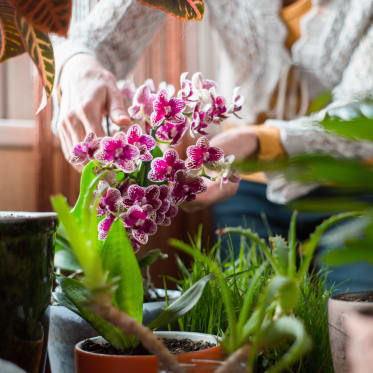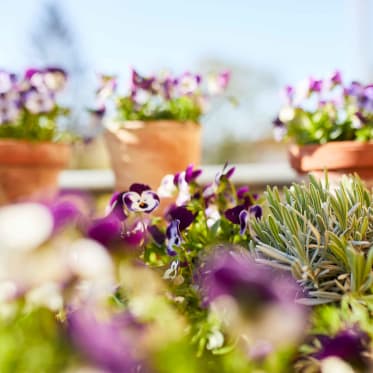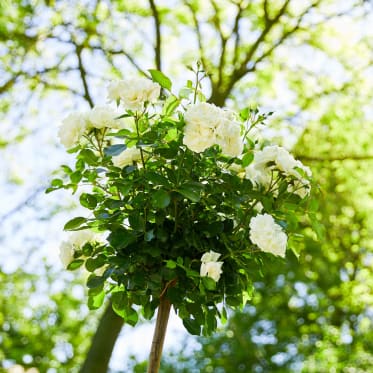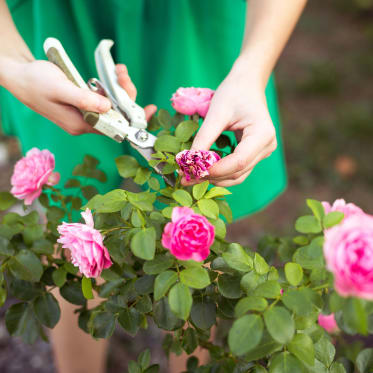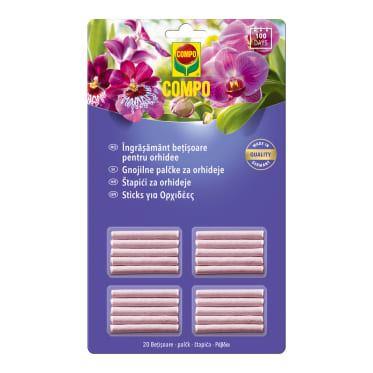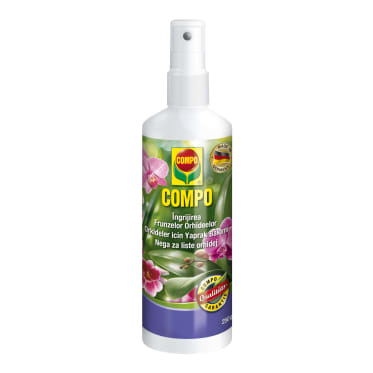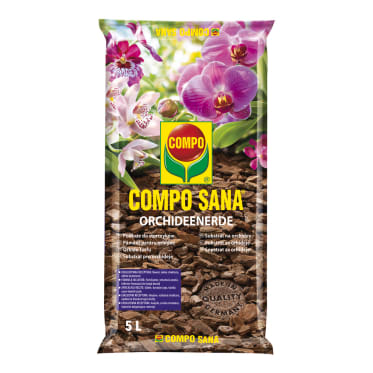Frequent search terms
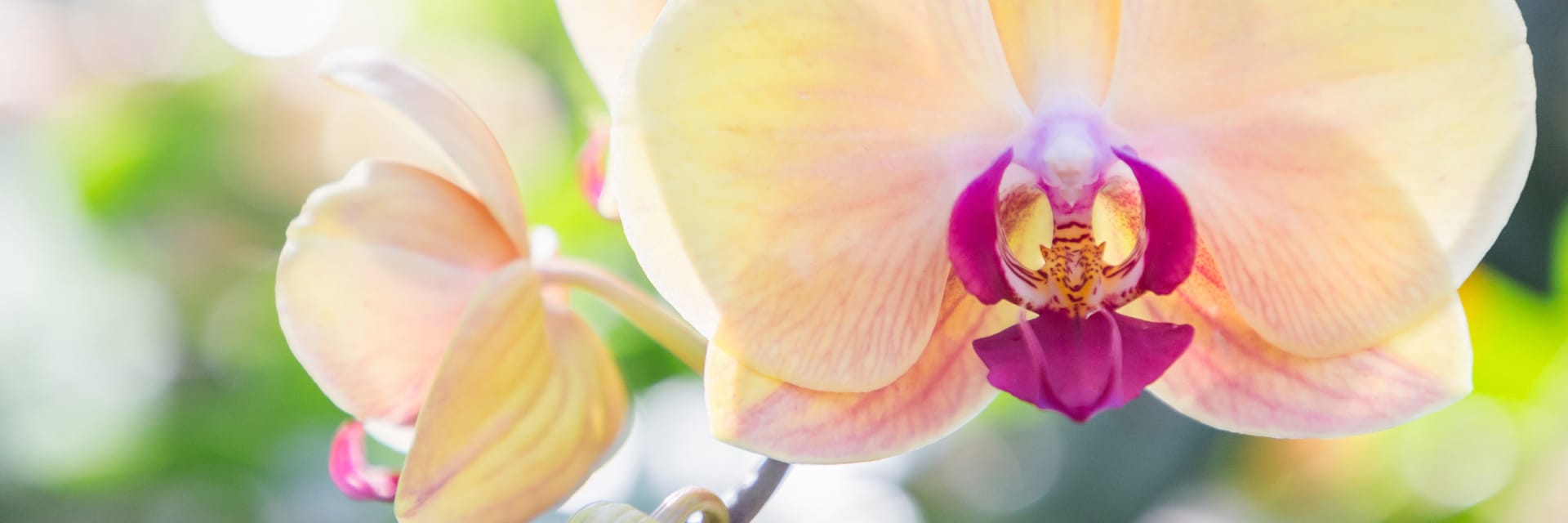
- COMPO
- Guide
- Plant Care
- Indoor plants
- Orchids: Wide-ranging species diversity in all shapes and colours
Orchids: Wide-ranging species diversity in all shapes and colours
The orchid is often referred to as the queen of flowers. They were introduced to Europe at the beginning of the 19th century and have been a fixed component of our windowsills ever since. Given the great diversity of orchids, each species has its own care requirements. Find out more about the different orchid species and the specific care they need here.

Phalaenopsis
The most famous orchid
Despite enduring popularity, many orchid species are largely unknown. The Phalaenopsis, also known as the moth orchid, is the most popular orchid species. Its upsides include relatively uncomplicated care and flowering almost all year round. This makes it the perfect orchid for beginners. In comparison to others, the genus is rather small with just 60 species. Like many other orchids, it grows as an epiphyte on trees. Its flowers are usually abundant and are characteristic of orchids. Their size can vary between 1.5 and 10 centimetres, depending on variety. The Phalaenopsis prefers a semi-shaded but bright location. The temperature should be between 18 and 20 °C and not drop below 16 °C at night. High humidity is important. The plant should never dry out completely, but it should not be watered too much to avoid waterlogging.
Orchid species and caring for them
The oldest orchid
Cattleya

It was the first orchid to come to Europe in the 19th century. The aristocracy in particular was impressed by its colourful flowers. In addition to the Phalaenopsis, it is one of the most popular orchid species. With around 40 species, it is used as a houseplant as well as a cut flower. In the wild, this orchid species lives on trees and sometimes on stones and rocks. The orchids, which can be bought in shops, reach a growth height of about 25 centimetres. The large flowers of Cattleya should be tied to provide them with additional support. They either bloom in the spring or in the autumn in a wide variety of colours. They like daytime temperatures between 18 and 20 °C. Night-time temperatures should drop to about 10 to 14 °C. The location should have plenty of light, but not direct sunlight. During the growth period, they need to be thoroughly watered and fertilised. Outside of the flowering period, watering should be reduced.
The orchid for beginners
Coelogyne
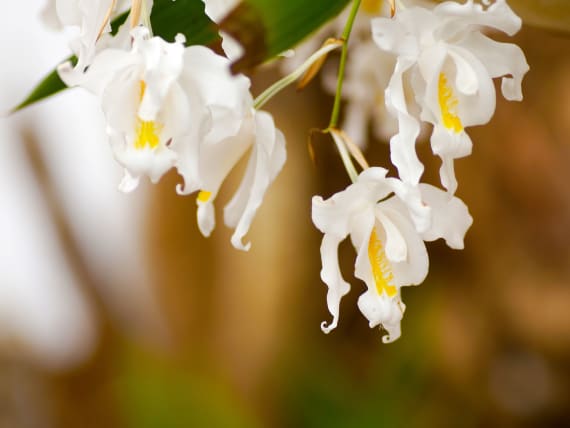
The Coelogyne is particularly suitable for beginners as it also blooms easily by cold windows. It flowers between February and June. The genus includes about 200 species and grows both in the soil and on trees, stones and rocks. Most species like to be in semi-shaded spots and in shallow containers. Hanging orchids come into their own in hanging pots or hanging baskets. Their flowers are between 5 and 10 centimetres large and usually bloom in light colours such as white or yellow. Daytime temperatures should be between 18 and 20 °C and drop to about 10 to 14 °C at night. They enter a resting period during the winter; in this period they prefer a dry and cool location. This is when they gather energy for the next flowering period. They should be generously fertilised and watered during the growth period.
The challenging one
Vanda

The story goes that this orchid species hails from the Philippines. Legend has it that it emerged from the tears of a goddess-like queen who was grieving for her dead husband. Vanda also grows on trees and should be grown without substrate with a suitable amount of humidity. So, this species is not a plant for beginners. It needs to be in a bright location but should not be exposed to the midday sun. Some species can be grown as small, young plants in glass cabinets. You can keep larger plants in greenhouses or winter gardens. But certain species are also suitable houseplants. The flowers of the Vanda radiate in a wide variety of colours and, as one of the few orchid species to do so, some of them also bear blue flowers. The plants are between 3 and 15 centimetres tall and usually display their floral abundance all year round. Daytime temperatures should be at least between 18 and 20 °C and not drop below 16 °C at night. The roots of the Vanda should be dipped in water regularly, while the upper parts of the plant should be sprayed.
The diverse one
Paphiopedilum

With the exception of Africa, this genus can be found all over the world. There is no single standard appearance, since it has very different characteristics within its own genus. It has a variety of forms including uniflorous and polyanthous. The individual species also vary in terms of flower size: The smallest is less than one centimetre large, while the largest has a span of well over one metre. The 'shoe' of the Paphiopedilum acts as an insect trap and protects the orchid from self-pollination. Revolver flowers are particularly popular because new flowers continue to bloom on the same stem over a period of several months. Given the great species diversity, caring for orchids also differs depending on the species and this needs to be kept in mind.
You might also be interested in these topics
These products help you care for your orchids


